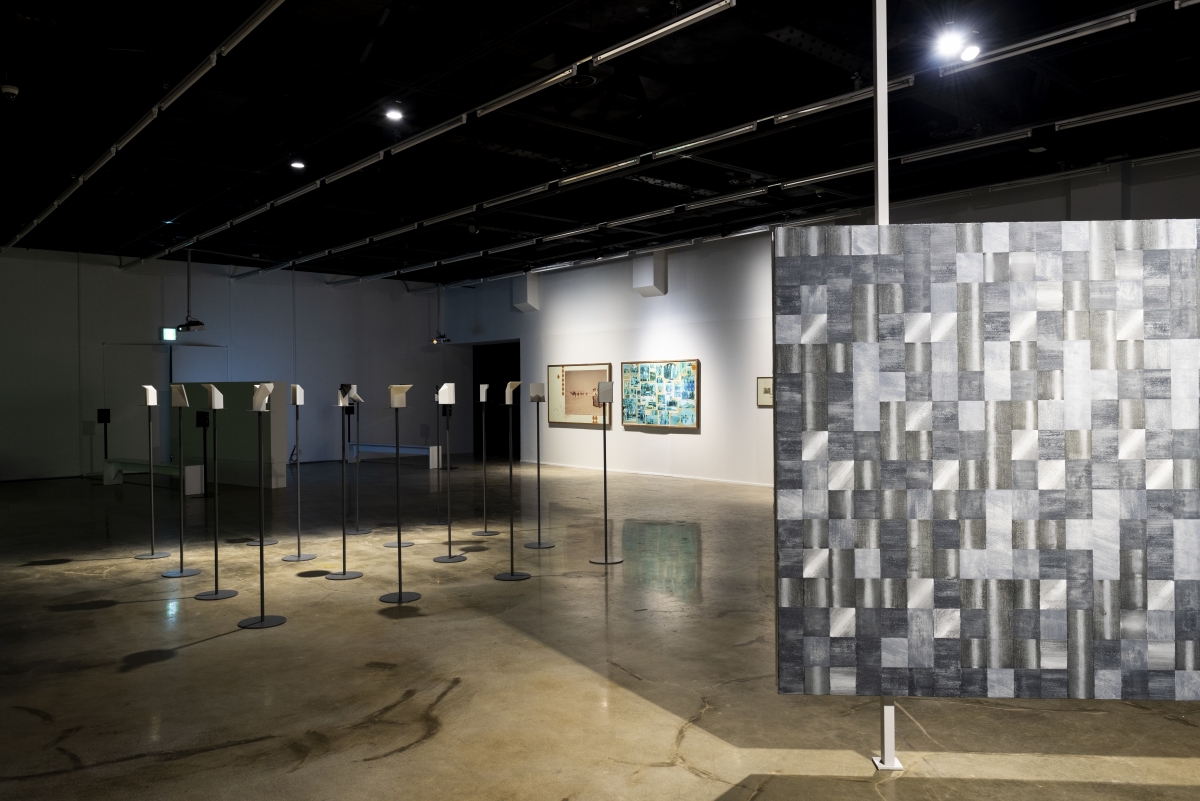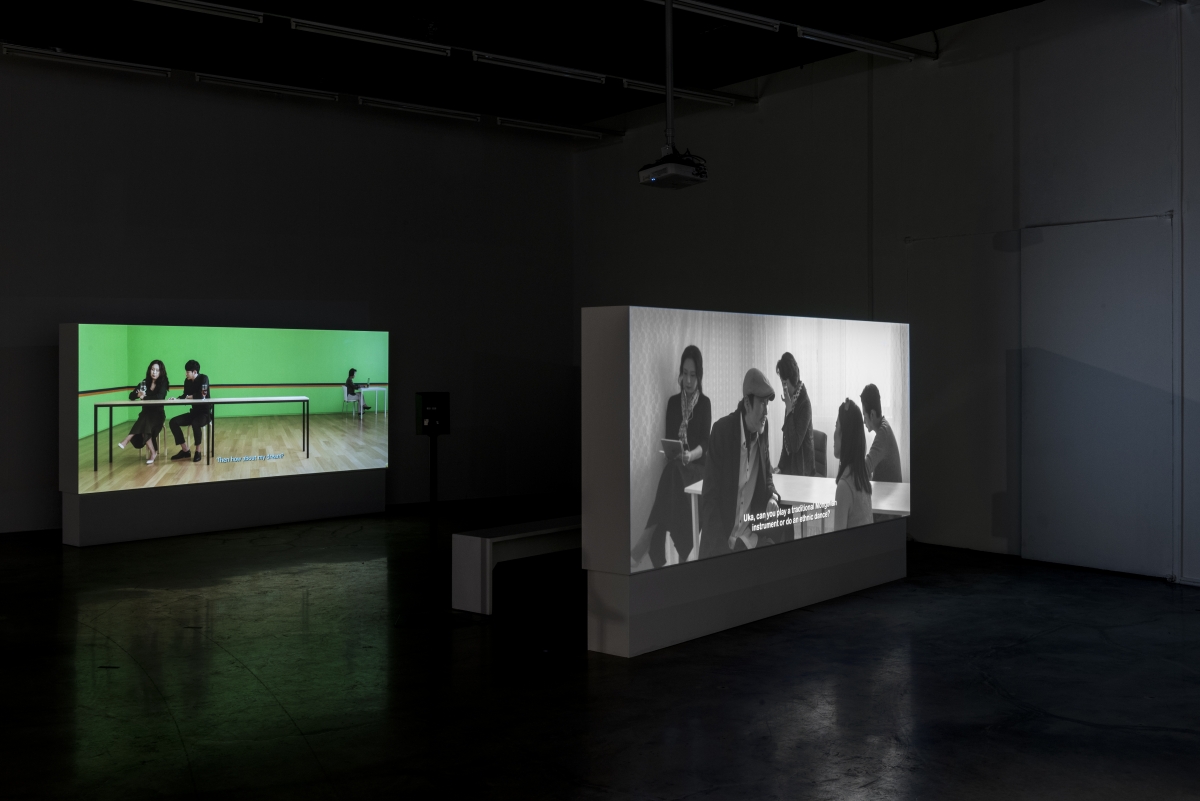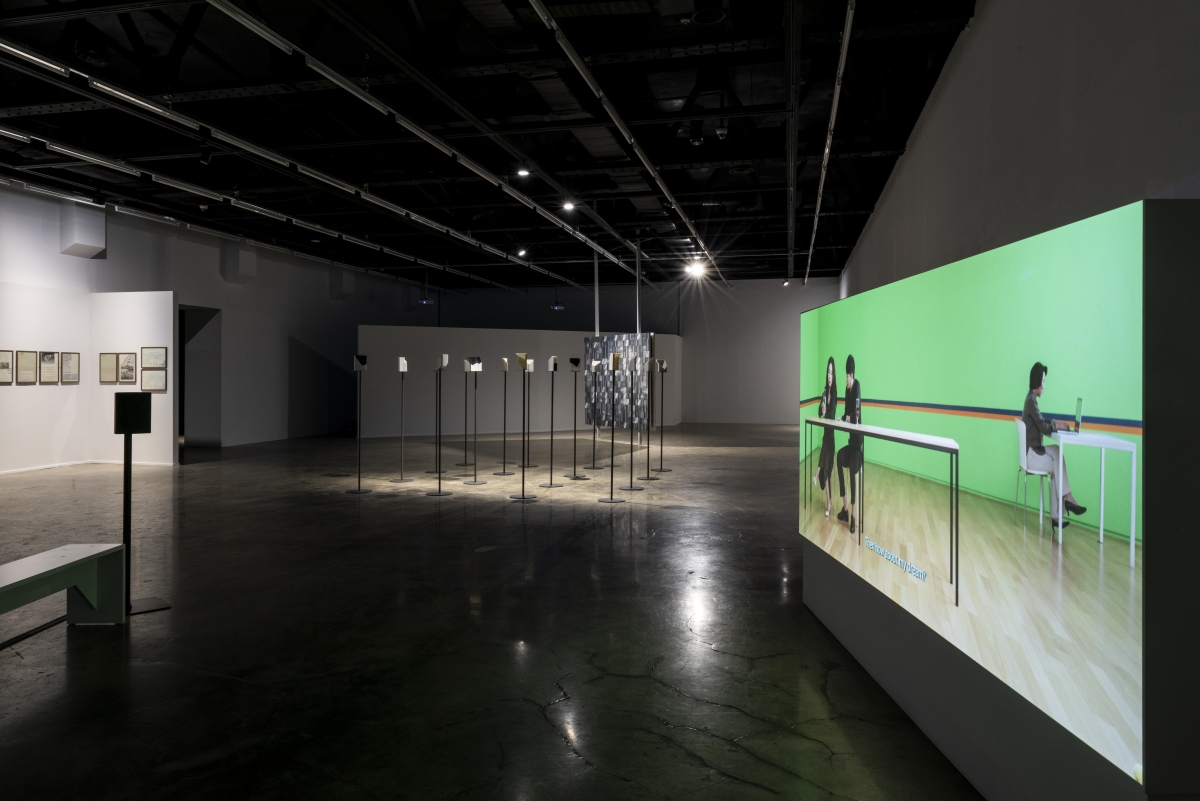Since June 2017, at ‘4tk004’ in Sewoon Sangga (meaning arcade), the solo exhibitions of six artists were sequentially held. These exhibitions had one condition; it was necessary to extract the contents or form of the show and to find a link or create a reaction to discover commonalities and consensus among contemporary artists and their work. Beginning with A Window of Mine (Hong Buhm), the six artists collected images of Sewoon Sangga and recorded the memories of the people who experienced the arcade (Standing On Their Own, The Lives of Others, and Don’t Look Back), and then worked on the meaning of the artist’s creation or the meaning of time (Or Look Back, Proliferation/ Division) based on those images. ‘Obsession’, held at the Arko Art Center, was an exhibition in which the curator, who was the last participant of the relay, took the baton and captured the spirit of the previous six exhibitions. The curator of ‘Obsession’, Lee Sunghui, found that Sewoon Sangga, which was in the background of the exhibition, was completed in 1968, and Lee Beikyoung was born in 1969. Other participating artists were born one year after another. The curator also paid attention to the contact point of the time zone shared between Sewoon Sangga and the individual artist. The six themes chosen for the participating artists all represent artworks or incidents of the 1960s and 1970s. According to the curator, it is ‘a sort of entry path for artists and the curator to think about the time and space they have lived in’.

Installation view of ‘Obsession’
Memory: Helicopter Extinguishing a Fire, Simón del Desierto, and Gravity’s Rainbow
Reigh Youngbum (professor, Kyonggi University) has noted that ‘Urban mixed-use complex buildings such as Sewoon Sangga or Nakwon Sangga, built in downtown Seoul, could be the representation of modernity. Sewoon Sangga is an urban symbol of the modern growth mechanism’.▼1 After failing due to the gradual changes in society, Sewoon Sangga only managed to maintain its reputation and finally changed to ‘Sewoon, Again’ (the original word in Korean is homonym with ‘re-built’) as part of Seoul’s urban regeneration project. ‘We saw how fast the city was transforming the arcade that was set up at the end of the urban restoration project in 2017’, the curator said, noting that she had observed the rapid change to the modern development mechanism in the arcade by six artists. ‘Obsession’, the title of the exhibition, means ‘repeated behaviour or accidents that reduce anxiety’, which involve oppressive thinking and considerable stress. When the desires of the past that have influenced society and when the lives of individuals have changed rapidly, how can we accept the unrest that arises from this crack and interpret both the past and the present?
The exhibition first deals with the memory of Seoul in the 1960s and 1970s, represented by Sewoon Sangga, and highlights how modernisation and its values affect the present.
Sound walk (Lee Beikyoung) is an artificial sound created by transforming wind sounds using computer programmes. If you listen inside the exhibition hall, you will notice low-lying noises like white noise. The theme that the artist received was a photo of a fire that broke out on Mar. 7, 1969, shortly after the construction of the Sewoon Sangga, where nearly half of its stores burned down within two hours. A scene of helicopter to quell the blaze and a crowd of people looking up at it resemble a scene from the disasters of today’s city. The artist creates a digital sound that recalls the sounds of a helicopter and sets it up in an exhibition hall within an entirely different context. Conversely, this leads to imagining the memories of life represented by ‘Sewoon Sangga’ that are firmly related to society in different ways.
Kwon Jayeon shows work based on her childhood. Based on her experience of living in Middle Eastern countries in the early 1980s, following her father who was on sojourn, he is a work that arranges photos of memory—office workers with camels in the desert and children posing or playing in front of exotic plants. It is like a photo album that contains personal memories of individuals, but it also reminds me of the policies and ideologies of a country lies behind personal memories in a thank-you note from children saying, ‘we will return to Korea as a great son and daughter of the nation’. The pronoun ‘he’ raises questions about the relationship between individuals and groups who are outside the group but are also asked to remain as members promoting the group’s ideology and memories, and preserving their memories as part of the collective memory.
Hong Buhm is more aggressive in his attitude to bringing personal memories into the collective memories of a group’s living environment. The continually changing image of a house in The Parabola Between 0 and 1 reflects the residential environment that changed in the 1970s and 1980s due to speculation fever on the real estate market. The image of simple, colourless structures shifts at a faster rate and then reaches a climax, changing into a multicoloured prism and breaking down into pieces as the rocket descends. The work of transposing the themes the novel Gravity’s Rainbow (Thomas Pynchon, 1973), which describes the evils of science and technology, into the current situation in Korea, intertwines capitalism in the name of free will and the gravity called ‘reality.’

Lee Soyung, 4:09, 2 channels HD video, each 12min, 17min 35sec, 2018
Creation: Don’t Say You’re Leaving, Revolver, Soundings, and 8 1/2
There is also work to be done to look back over the works that were produced in the 1960s and 1970s, to show the influence of today’s works and to question the meaning of creation. Psychedelic means the hallucinatory state of intoxication and it usually recalls an art form that expresses a temporary, intense experience. This came to Korea in the 1970s as and Kim Suyoung has interpreted Don’t Say You’re Leaving of Kim Jungmi, the first female psychedelic vocalist in Korea, into her own artwork. The artist assigned gradations by substituting other codes and numbers for psychedelic music. Compared to the psychedelic, which creates a daydream-like and hallucinatory atmosphere, Kim’s Mark No.1 has a geometric aesthetic, as if looking at the surface of the building. The contrast of colourful mirror balls inside the exhibition hall remind viewers of hippie culture and the Mark No.1, which seems to resemble a silhouette of geometric windows highlights the absence of hippie culture, which was anti-establishment but pursued cultural and spiritual ideals.
Revolver (1967) and Soundings (1968) are the work of Robert Rauschenberg, who dreamed of integrating art and technology. They are powered by electronic motors to show an interaction. kdk, who has photographed every corner of the building and presented its geometric shapes, printed his work in three dimensions using a 3D printer. The process of making paintings into three-dimensional objects makes us rethink the relationship between art and technology. Their works reveal the absence of social culture of the past or show how past attempts at technological development have continued to the present day.
Lee Soyoung’s 4:09 further addresses the concept of ‘creation’ that has achieved extensive links between artists and curators in relay exhibitions, mediating between the 1960s and the present. 4:09 is based on Federico Fellini’s film 8 1⁄2 (1964), which addresses the solitude and contradictions of creation, meaning an ambiguous time ‘too late to start a new work and too early to finish the day’. The short videos covered in 4:09 merge the interviews of artists and reporters, the soliloquy of event planners, the dialogue between scenario writers and actors, and show a variety of ideas and solitude that take place during the creative process, including ‘the authenticity of the work’ and ‘the conditions of good curating’.
If a ‘continuous confirmation of past behaviours’ is a symptom of obsession, the act of creativity, such as recalling memories against the backdrop of a ‘reborn’ Sewoon Sangga and recreating works of the time, could be seen as a new ‘obsessive’ act. Their attempts, however, do not remain a simple or repeated act of remembrance. It is because they focus their attention here today by asking what the past means to us, that they are able to connect the rapidly disappearing collective memories and the present, and to ask again what the creative act really means.

Installation view of ‘Obsession’
-
1. Kim Sungwoo, Reigh Youngbum, Zef Hemel, Kees Christiaanse et al, Beyond SEUN-SANGGA: 16 ideas to go beyond big plans, SPACE Books, p. 36.





